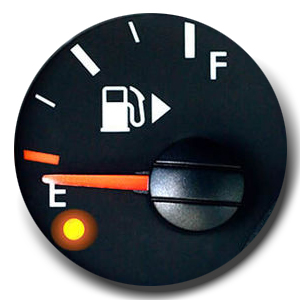
Fuel Injection / GDI Services $145 + taxes & eco fees
Every year or 20 000 km it is recommended to perform this service to keep your valves clean and engine running it’s best.
Fight Gas Prices!
Gasoline Direct Injection Engines are notoriously bad for carbon build-up on the intake valves. Traditional fuel injectors spray before the valve which keeps them clean. Because GDI engine spray the fuel directly into the combustion chamber, the valves don’t get washed in fuel and become dirty. This build up can; rob performance, lower the compression in the engine, cause engine missfires, cause rough idling and in extreme cases can cause engine damage.
Traditional fuel injection systems also benefit from this service. Most fuel we have access to contains up to 10% ethanol, which is hard on fuel systems and can cause fuel injectors to get clogged or lose efficiency. Ethanol absorbs moisture in the air, this moisture then condenses into water which can cause corrosion on critical internal fuel system components.
– OEM and Warranty Approved
– Uses Terra Clean Product
– Helps Restore & Maintain fuel effeciency
– Made from modified gasoline, no harsh chemicals or solvents used
– Cleans Intake valves, O2 Sensors, Fuel Injectors, Catalytic Converters, Combustion Chamber
– In some cases it can clear catalytic converter codes P0420 or P0430

Brake Fluid Flush – (DOT3) $95 + taxes & eco fees (DOT4) $140 + taxes & eco fees
The Brake Fluid Flush is Recommended every 2 years Independent of Mileage
Brake Fluid Flushes are very important and often overlooked by vehicle owners. Why are they so important? Brake Fluid is Hygroscopic, which means the fluid actually absorbs moisture from the air and any moisture that may enter the reservoir. Brake Fluid has this property to prevent corrosion from damaging brake components internally causing components to seize. However, as the moisture content in the Brake Fluid increases, the anti-corrosion properties of the fluid decrease and, more importantly, the Boiling Point of the Brake Fluid decreases.
The Boiling Point of Brake Fluid is very important. The friction created when the brakes are applied, which slows the vehicle, creates a tremendous amount of heat. If the brake fluid boils, it turns from a liquid to a gas which causes a very dangerous condition called Brake Fade. Brakes work hydraulically based on the principle that fluid can not be compressed, if the fluid turns into a gas (which can be compressed) the brakes wont work when they are applied!
-Brake Fluid Tested for Moisture Content Prior to Flushing
-Master Cylinder Evacuated of Old Fluid & Re-Filled with New Fluid
-New Fluid Flushed Through Brake Lines & Brake Calipers/Wheel Cylinders
-Brake Fluid Level Adjusted in Reservoir
-Fluid Moisture Content Re-Tested to Confirm it is within specification

Power Steering Flush $65 + taxes & eco fees
We recommend Power Steering Flushes every 2 years based on fluid condition.
Power Steering Flushes are the best way to prevent premature wear and damage to steering components. Hydraulic pressure is created by the power steering pump, which is supplied to the steering gear through hydraulic lines. As the fluid breaks down, it loses is lubrication and anti-frothing properties. This can cause air to enter the hydraulic system through air bubbles trapped in the fluid, which causes metal on metal contact within the power steering pump and lowers the efficiency of the pump which increases steering effort (makes it harder to turn the steering wheel) which can cause serious safety issues while driving. Aside from the safety issues, as the Power Steering Fluid breaks down over time it becomes an abrasive mixture of Fluid and Metal Particles traveling through components with very tight tolerances at a very high pressure. This can cause pre-mature wear to all the components in the system, as well as fluid leaks. The abrasiveness of the old fluid can damage seals in the pump and/or steering gear assembly which can cost thousands of dollars to repair. Regular Power Steering Fluid Flushes can prevent this and save the vehicle owner a lot of money!
-Power Steering Reservoir is Evacuated of Old Fluid
-New Vehicle Specific Fluid added to Reservoir
-Vehicles engine is started and steering wheel turned while flushing fluid
-New fluid is continually being added to reservoir to prevent air intrusion
-This process is repeated until fluid condition improves

Automatic Transmission Service – $200 (and up) + taxes & eco fees
Transmission Service every 80 000 km or based on fluid condition.
The modern Automatic Transmission is more complicated than ever. Most newer vehicles have a minimum of 6 gears with some having as many as 10 gears! This was done by the manufactures to increase fuel efficiency. But what does it mean for the vehicle owner? It means that whatever money savings achieved by a more fuel efficient vehicle could be overshadowed by the cost to repair or replace the overly complicated modern transmission should it fail when the vehicle is out of the warranty period. Most vehicle manufactures are saying that the Transmission Fluid is “good for the life of the vehicle and doesn’t need to be changed during regular maintenance.” We have seen first hand that this is not true. Fluid can brake down, get burned, contaminated or change thickness. This leads to miss-shifts and or transmission failure if not addressed. The best way to prevent pre-mature failure is to service the Transmission Fluid and Filter (if applicable) as part of the Vehicles Maintenance regardless of what is outlined by the Vehicles Manufacturer.
-Transmission Unit is Drained of its Old Fluid
-Transmission Pan is Removed and Filter Changed (if applicable)
-Unit is then filled with New Fluid Specific to OEM Vehicles Requirements
-Fluid is brought up to Operating Temperature and Level is Adjusted
-This process is Repeated Until Fluid Condition Improves
-Transmission is NOT hooked up to any external flush machines as they can Damage Modern Transmissions
– Transmission Adaptive Learning is reset (if requested)